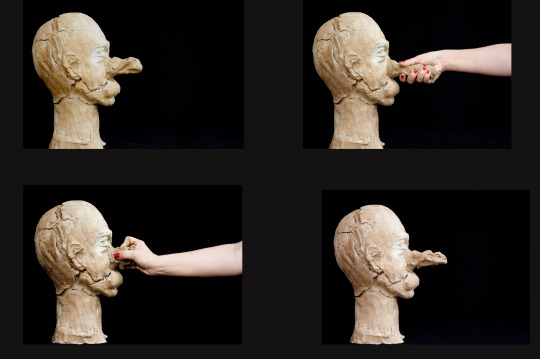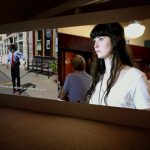Featured Artist: Deborah Castillo
NYFA’s Immigrant Artist Mentoring Program pairs NYFA fellows and other associated artists as mentors to gifted immigrant artists. We asked mentor Katya Grokhovsky (IAP ‘14/’15) to interview her mentee, Venezuelan artist Deborah Castillo, about her upcoming solo exhibition RAW. The exhibition opens with a live performance on September 22 and runs through October 15 at Mandragoras Art Space in Queens.
KG: Congratulations on your first solo exhibition in NYC. Could you tell me what work you will be exhibiting and what concepts you are exploring?
DC: Thanks, Katya. I will present a live durational opening night performance and a site specific installation, which includes sculpture and video. I explore the persistence of patriarchy and the construction and deconstruction of various histories. Throughout time, we have supported the image of the hero, which continues to dominate us today. I’d like to challenge that. I will be showing a new body of work, which employs clay as a primary medium and performative bodily actions as molding tools, creating new forms of existence and challenging our preconceived notions of power.
KG: The title of the exhibition is RAW, could you expand on what the title refers to and how it relates to your practice in general?
DC: RAW has a double meaning here: the raw skin of the body or human flesh and the term “unfired,” which relates to the basic process of working with clay. The works in the exhibition are made with wet clay and explore different elementary stages of traditional ceramic making process: from wet and humid to dry and dusty. I am interested in this process of making, rather than the final product. I am inspired by the changes of the material itself, the shaping/sculpting as metamorphosis, similar to development of a human being and power structures, which I have been researching for years now.

KG: You arrived in New York a year ago. Has your practice changed or been affected in any way by your move to the USA?
DC: My practice has changed in many ways, specifically in terms of concepts and scale, as a result of downsizing of work space and living in a new environment. My work here is slowly changing and adapting. I feel that such drastic changes, such as relocation and migration, shake you up deeply to your core and in the end, challenge you to do better work!
KG: Please tell me about your journey as an artist. What brought you to the USA and why did you chose to live in New York?
DC: I had to leave my country because the totalitarian Venezuelan regime censored me on national TV for an exhibition that criticized the political system. I had to hide for a couple of months and after that, I decided to leave the country in order to be free in my art work’s expression. I chose New York because it is one of the most multicultural places in the United States and there is an interest and support for a South American art. So, for me this is the right place to be in this moment of my life and career.
KG: Your practice deals with political issues of the country you come from. How are you translating your work to the American audiences?
DC: My practice is influenced by my immediate surroundings, whilst exploring the relationships between the body and the physical space and confronting realities within my existence as a South American-born artist. In New York, I am interested in exploring my new cultural identity in this city’s context through interdisciplinary works.
KG: What challenges do you think you have encountered as an immigrant artist?
DC: I have probably experienced the same challenges as most immigrants around the world. Starting my life from zero, rethinking my work and practice, developing a new community, creating links between Latin American and local artists, and initiating a new identity in the process.
KG: What are you working on next?
DC: I will be going to Bogota to exhibit my work at ArtBo (Colombia’s biggest art fair) with Carmen Araujo Gallery at the end of September. Within the next year I will also be working towards another solo exhibition which will take place in February in Venezuela, where I will exhibit a selection of video-performances, sculptures, drawings and a site-specific installation I recently completed at The BANFF Centre residency in Canada centering around historic political discourse themes.
We highlighted this interview in celebration of National Hispanic Heritage Month. View more of Deborah Castillo’s work and learn about Katya Grokhovsky on their websites.
Images, from top: Deborah Castillo, Unmentionable 2015. Video-Performance. Duration: 03:19; Deborah Castillo, Demagogue 2015. Video-Performance. Duration: 01:25





